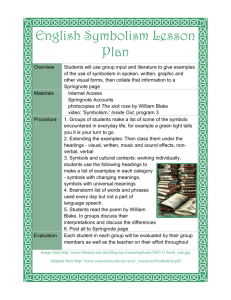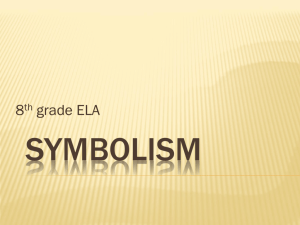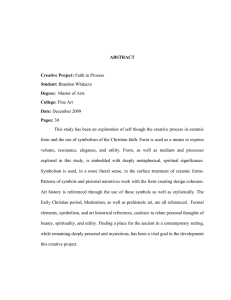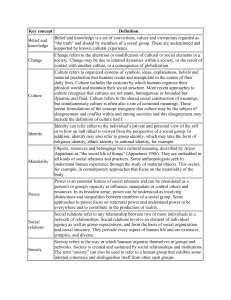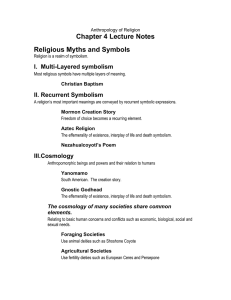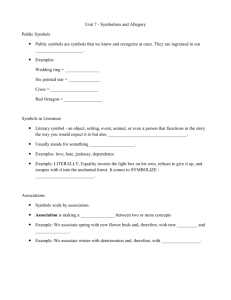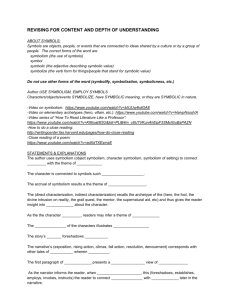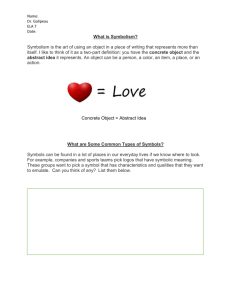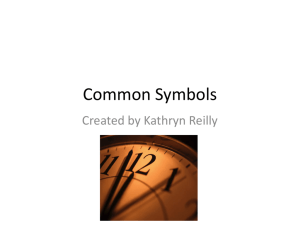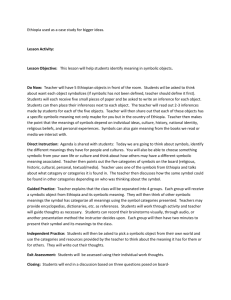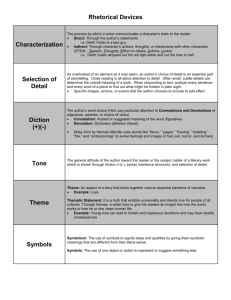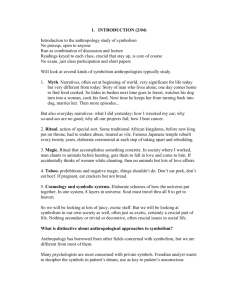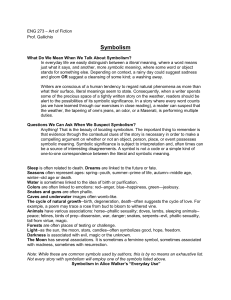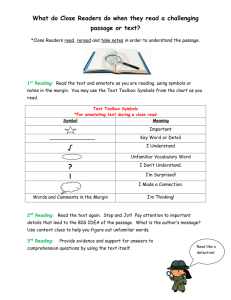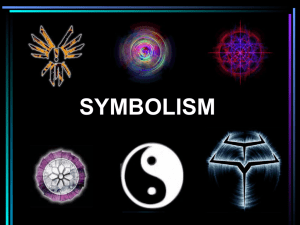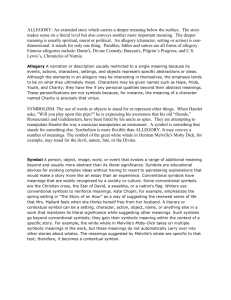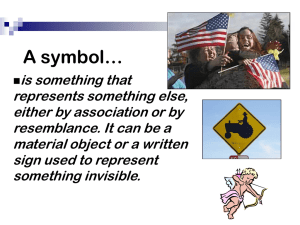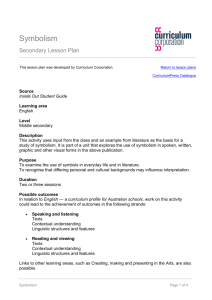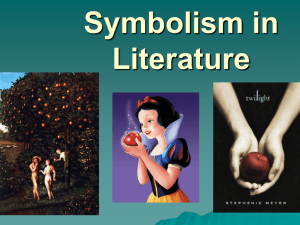File
advertisement
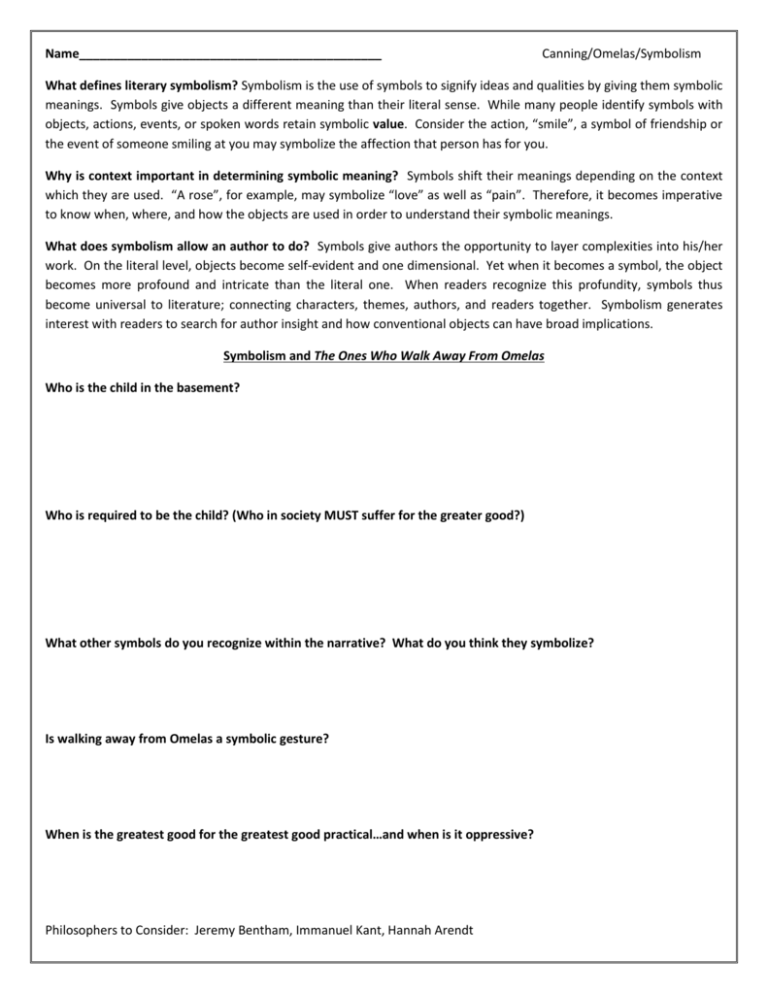
Name____________________________________________ Canning/Omelas/Symbolism What defines literary symbolism? Symbolism is the use of symbols to signify ideas and qualities by giving them symbolic meanings. Symbols give objects a different meaning than their literal sense. While many people identify symbols with objects, actions, events, or spoken words retain symbolic value. Consider the action, “smile”, a symbol of friendship or the event of someone smiling at you may symbolize the affection that person has for you. Why is context important in determining symbolic meaning? Symbols shift their meanings depending on the context which they are used. “A rose”, for example, may symbolize “love” as well as “pain”. Therefore, it becomes imperative to know when, where, and how the objects are used in order to understand their symbolic meanings. What does symbolism allow an author to do? Symbols give authors the opportunity to layer complexities into his/her work. On the literal level, objects become self-evident and one dimensional. Yet when it becomes a symbol, the object becomes more profound and intricate than the literal one. When readers recognize this profundity, symbols thus become universal to literature; connecting characters, themes, authors, and readers together. Symbolism generates interest with readers to search for author insight and how conventional objects can have broad implications. Symbolism and The Ones Who Walk Away From Omelas Who is the child in the basement? Who is required to be the child? (Who in society MUST suffer for the greater good?) What other symbols do you recognize within the narrative? What do you think they symbolize? Is walking away from Omelas a symbolic gesture? When is the greatest good for the greatest good practical…and when is it oppressive? Philosophers to Consider: Jeremy Bentham, Immanuel Kant, Hannah Arendt
